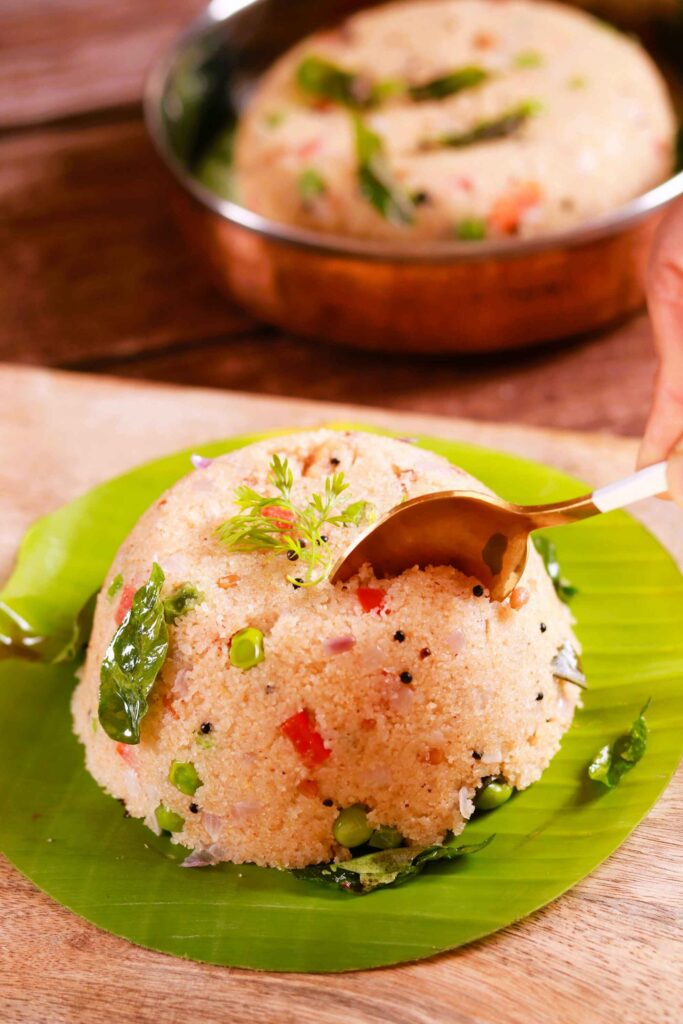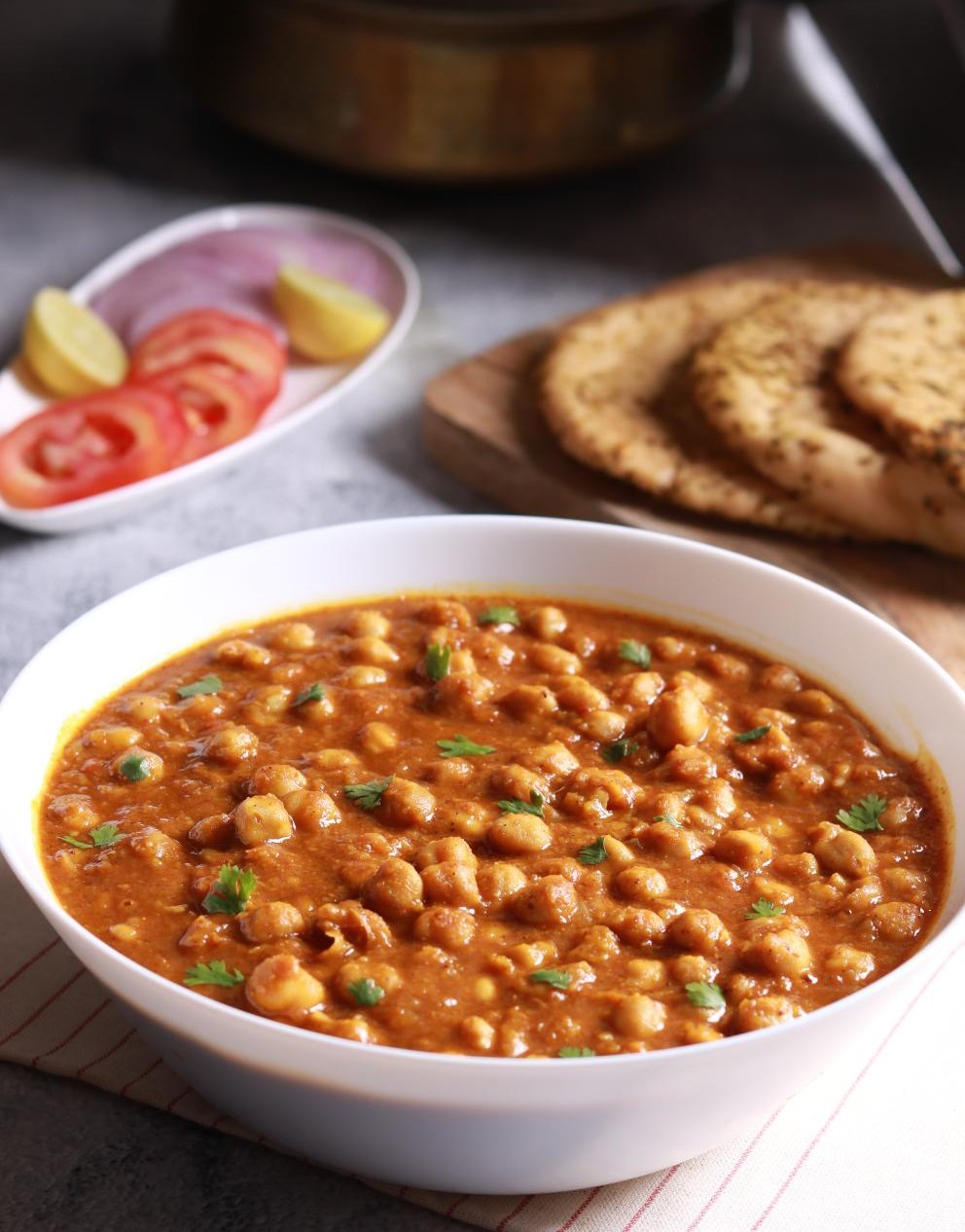Breakfast is widely acknowledged as the most important meal of the day because it breaks your overnight fast by replenishing glucose levels essential for energy and alertness alongside other vital nutrients needed for good health. Throughout my culinary expedition, I have come across various breakfast options but there’s one which stands out due to its simplicity and tastiness – upma.
This well-known Indian dish is famous for its soft texture and savory taste. Coming from South India although being popular throughout other parts of India as well this steaming hot bowl consists primarily of semolina or coarsely ground wheat flour blended with spices mixed vegetables (and occasionally nuts). It can be prepared in different ways, served either as a light snack or complete meal.
Why I LOVE… This Recipe!

Alright, let me tell you why I love rawa upma so much! First off, it’s like a warm hug for my taste buds— think about a COMFY bowl of SEMOLINA that is LIGHT and FLUFFY with VEGGIES and SPICES. It is the best comfort food ever.
This takes me back to those laid back SUNDAY mornings at home when the smell of upma used to fill up the entire kitchen. Every single bite feels like a walk down MEMORY LANE.
And oh boy is this versatile or what! I can mix in more VEGGIES, toss some NUTS for added CRUNCHINESS, or have it spicy with CHUTNEY on the side. It is every time like a CULINARY journey while preparing.
Then there’s the convenience – making rawa upma couldn’t be any easier! With just few ingredients and quick cook time needed; this has become my go-to recipe for filling BREAKFAST without too much work involved. It’s simple, YUMMY and always does the trick.

The Origin and History of Upma
Upma traces its roots back to the Indian subcontinent, specifically Tamil Nadu and Karnataka states. The term itself is derived from Sanskrit words like ‘uppumavu’ or ‘uppidi’, meaning ‘salted flour’ loosely translated into English.
Originally this food acted as an ingenious method to recycle leftover grains where cooks would skillfully combine oil with spices then incorporate rice/wheat remnants creating frugal yet satisfying dishes. With time, several modifications were made resulting in semolina (rava/sooji) becoming most commonly used cereal for making Upma due to both its unique texture and ability to absorb flavors from other ingredients present in the dish.
Health Benefits of Eating Upma for Breakfast
It’s more than just a flavor explosion; it’s also nutritionally dense, which makes it a great breakfast choice. The main ingredient in semolina is durum wheat, which contains high amounts of protein and fiber. This combo keeps you satisfied for longer and cuts down on mid-morning snack cravings.
In addition to these benefits, semolina has a low glycemic index (GI) that ensures slow energy release and helps maintain stable blood sugar levels in people with diabetes. Carrots & peas infused in this recipe contribute to its fibre content and kickstart the day with essential vitamins and minerals.
Moreover, during tempering – usually done using heart-friendly fats such as ghee – antioxidants are introduced into the dish along with curry leaves, mustard seeds and lentils. Not only do they add flavour but also offer anti-inflammatory properties while aiding digestion.
My Rawa Upma: Image Gallery







Chef Yogi’s Notes: Tips to Elevate the Taste of Your Upma
Though upma is delicious as-is, there are several ways to make it more flavorful and appealing. Here are some suggestions for taking your dish up a notch:
- Roasting the Semolina: The trick behind fluffy non-sticky upma lies in proper roasting of semolina. Do this over low heat until golden brown and fragrant without burning it.
- Tempering in Ghee: While oil can be used instead of ghee, there’s no substitute for the rich aroma or taste that comes from tempering spices with clarified butter. In moderation, ghee is also considered healthy.
- Adding Milk: Replace part of water used in cooking upma with milk for creamier texture. This imparts subtle richness that delights palates everywhere!
- Cashews & Lentils: Roasted cashews provide delightful crunchiness while chana dal or urad dal adds protein content as well as texture to this dish.
- Let It Steam: Once semolina has been added into boiling water; reduce heat setting below and cover pan tightly. Allow steam to form inside which will cause grains to swell up thereby becoming fluffy without overcooking them.
Pairing Your Upma: What Should I Have with It?
While upma is quite filling on its own, there’s no harm in pairing it with other items so as to boost flavor profile. Here are some popular combinations:
- Coconut Chutney: Cool creamy coconut chutneys blend well with warm spices found in upmas.
- Sambhar: Addition of tangy spicy South Indian lentil & vegetable stew known as sambhar brings out more dimensions in every bite of meal prepared from this dish.
- Pickles: A little Indian pickle on the side adds zestiness to each mouthful!
- Yogurt: Put a spoonful of natural yogurt alongside to cool the spices and add a tang.
So next time you are wondering what to cook for breakfast, think about this airy, light yet savory dish that has been designed to excite your palate buds. Give it a shot – it might just become your favorite way of beginning the day!
Ingredients
- 1 cup Semolina rawa
- 1 tbsp Ghee
- 1 Tsp Mustard seeds
- 1/2 Tsp Urad Dal De skined split black lentils
- 1/2 Tsp Chana Dal Gram lentil
- 1 Tbsp Cashew nuts
- 1 Medium Red Onion chopped.
- 1 Small Green Chilli chopped.
- 1 Sprig of Curry leaf
- 1/4 Cup Small Diced Carrot
- 1/4 Cup Green Peas
- 1/2 Inch piece of Ginger chopped.
- 1 Tsp Table Salt
- 1/2 Tsp Sugar
- 1 1/2 Cups Water
- 1/4 Cup Milk
- 3-4 Sprigs Chopped Coriander leaves
Instructions
- Roast Semolina: Place a thick-bottomed pan on medium heat. Add semolina to the pan and roast it until a nice, cooked aroma emanates. This step enhances the flavor of the upma.
- Heat ghee in the same pan
- Tempering: .Add mustard seeds and let them crackle. Then, add urad dal and chana dal. Fry until they turn golden brown. Next, add cashew nuts and sauté until they are lightly browned and fragrant.
- Sauté Aromatics: Add chopped onions and green chillies to the pan.
- Add Curry leaves, and Sauté until the onions turn translucent and soft. This adds a delightful aroma and flavor to the upma.
- Incorporate Veggies: Toss in the chopped carrots, ginger, and green peas. Stir well to combine.
- Season with salt and sugar to enhance the taste of the vegetables.
- Add Liquids: Pour in the water and milk into the pan. Bringing this mixture to a boil infuses the upma with a creamy texture from the milk.
- Combine with Semolina: Gradually add the roasted semolina into the pan while stirring quickly to prevent any lumps from forming. Ensure that the semolina is evenly mixed with the liquid and vegetables.
- Cook: Cover the pan and reduce the heat to low. Allow the upma to cook for a couple of minutes, allowing the flavors to meld together.
- Steam: After cooking, keep the lid on and let the upma sit for a few minutes. This allows the semolina to absorb any excess moisture and become fluffy.
- Serve: Remove the lid add fresh chopped coriander leaves, give the upma a good mix, and serve it hot. For an authentic touch, serve on banana leaves to enhance the presentation and aroma of the dish.
Explore Our Latest Recipes
-

Traditional Kerala Egg Curry with Coconut Milk (Mutta Curry)
If there’s one dish that makes a slow, rainy morning in Kerala feel extra cozy, it’s a Traditional Kerala egg curry with coconut milk, served with soft Paratha or lacy dosa. This is the kind… Read more
-

Authentic Punjabi Chole Kulche Recipe
If you’ve ever visited North India, you’ll know that punjabi chole kulcha isn’t just a meal, it’s a whole experience. Picture bustling streets filled with the scent of spiced chickpeas, fluffy kulchas hot off the… Read more
-

Easy Kala Chana Chaat Recipe – Tasty, Filling & Protein-Rich
If you love Indian snacks that tick all the boxes: healthy, crunchy, tangy, and totally addictive, then kala chana chaat is your new favourite. It’s a dish that comes together effortlessly yet feels incredibly refreshing.… Read more
















